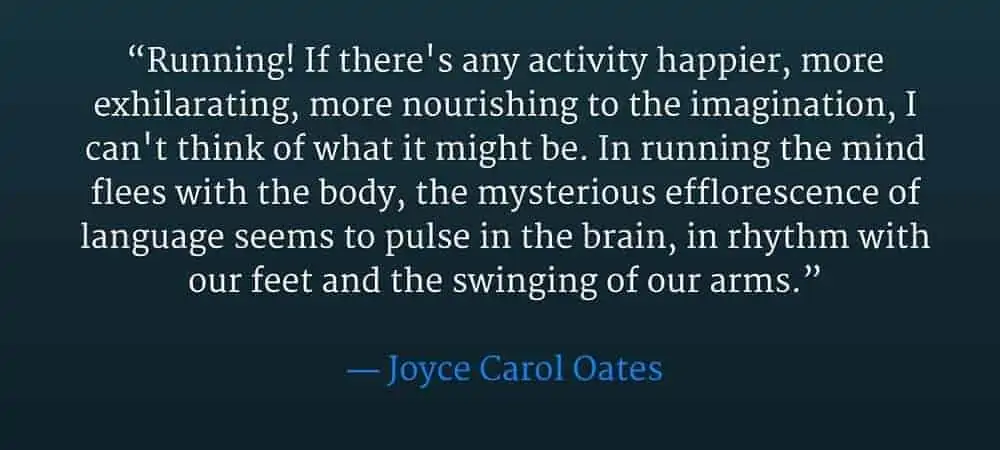Today's Saturday • 7 mins read
— Researched and written by Dr. Sandip Roy.
Most of us know that exercise improves blood flow to the brain and increases our learning and memory abilities, but can it also make us happier?
What does science have to say about it?
Exercise And Happiness
How Does Exercise Boost Happiness?
Studies strongly suggest that physically active people are happier, have better life satisfaction, and have higher self-esteem.
Exercise has been shown to reduce depression, anxiety, stress, and panic. It can also improve mental processing, help people live longer, improve sleep quality, and strengthen their immune system.
Four main reasons why exercise makes us happier:
- Self-mastery — Exercising makes us feel more in control of our bodies and the capabilities of our bodies. In turn, this makes us feel better in control over our circumstances.
- Distraction — Exercise distracts us from negative thought patterns like worrying and overthinking, which cuts down our stress.
- Social contact — Working out with a friend or family or a group provides the chance for increased social contact, which makes us happier.
- Strength and stamina — With regular exercise, we witness the growth of our strength and stamina. This boosts our goal-achievement confidence, which spills over to other areas of our life.
People’s moods significantly increased after exercising.
— John Ratey, Neuropsychiatrist, Harvard Medical School
Research by Colmenares & Voss (2021) showed that a 40-minute walk three times a week can significantly revive our brain’s white matter and improve memory in those over sixty years of age. Those who did not exercise were found to have their white matter frayed and shrunk.
Research demonstrates that exercise may be the most reliable happiness booster of all activities.
— Positive psychologist Sonja Lyubomirsky, the author of The How of Happiness
The 6 Happy Brain Chemicals of Exercise
Exercise isn’t just about physical health; it’s a powerful elixir for our brain chemistry. Neurotransmitters and hormones play a pivotal role in boosting our happiness during and after exercise.
John Ratey, the world-famous exercise researcher, says, “Exercise generates the release of serotonin, norepinephrine, and dopamine in the brain. People’s mood significantly increased after exercising.”
These are the six happiness-boosting brain chemicals released in response to exercise:
- Endorphins
- Serotonin (5-HT)
- Norepinephrine (NE)
- Dopamine (DA)
- Brain-Derived Neurotrophic Factor (BDNF)
- Leptin
The interplay of these chemicals explains why, after a good workout, we often feel mentally refreshed, emotionally balanced, and ready to take on the world.

1. Endorphins
Endorphins are our natural painkillers and mood lifters. They work in two ways – make exercise more enjoyable and help reduce stress and anxiety.
During intense exercise, endorphins flood our brains, reducing discomfort and leading to feelings of euphoria. This is often called a “post-exercise high,” which makes us feel happy and uplifted after a workout.
2. Serotonin (5-HT)
Serotonin is often called the “feel-good” neurotransmitter because it lifts our mood.
Regular physical activity can enhance serotonin levels, resulting in a heightened sense of well-being and a more cheerful disposition. A physical therapist can help with this.
It’s like turning on a light in a dim room — suddenly everything seems more manageable and positive.
3. Norepinephrine (NE)
This hormone is a kind of natural energy drink for our body.
During exercise, serotonin helps make our focus and alertness sharper by making our heart beat faster and giving our muscles more oxygen.
Think of it as the body’s turbo button, giving us that extra burst of energy when we’re pushing through a tough workout.
4. Dopamine (DA)
This neurotransmitter is your personal cheerleader, urging you on towards your goals.
When we exercise, our brains release dopamine, which motivates us and rewards us for our efforts.
It’s the driving force behind our desire to win and achieve. Whether it’s the satisfaction of completing a run or the thrill of beating a personal best, dopamine plays a key role.
5. BDNF (Brain-Derived Neurotrophic Factor)
BDNF is like the brain’s repair kit.
It not only helps in repairing and protecting brain cells but also plays a crucial role in memory and learning.
When we exercise, our bodies produce more BDNF, helping us think clearer and remember better. It’s like giving your brain a refreshing reboot, clearing out the mental cobwebs.
Exercise researcher MK McGovern highlights that while regular exercise can boost BDNF levels, there’s a limit to its benefits. Overexercising doesn’t equate to an exponential increase in brain health. It’s all about finding that sweet spot in your workout routine.
6. Leptin
This study by Stephanie Fulton has shed light on leptin’s role in providing us with the famed ‘runner’s high.’
Leptin is involved in regulating energy balance and motivating us to be active. When leptin levels are low, our brains receive a signal to engage in physical activity.
It’s an evolutionary throwback to when we needed to be active to find food. Now, this mechanism fuels our desire to run or exercise, leading to exhilarating feelings of euphoria.
So, exercise does more than shape our bodies; it chemically restructures our brains for happiness and well-being.

Almost immediately upon starting exercise, a neurochemical orchestrated euphoria sets off. This feeling of euphoria is strongest at first, but it can last a long time before going away.
- So, if you want to feel happy now, get a short bout of exercise. In 20 minutes, you’ll find yourself happier and peppier.
- As a bonus, you get to keep the positive mood benefits of those minutes for up to twelve hours.

SMILE Study: Exercise vs. Antidepressants
In 2000, Michael Babyak and team did an exercise study — SMILE or Standard Medical Intervention & Long-term Exercise. They selected 156 people aged 50 to 77 who were diagnosed with major depressive disorder (MDD).
They divided them into three random groups:
- Exercise Group (Group A): They were to do aerobic exercise, 45 min a day, 3 times a week.
- Medication Group (Group B): This group was to take their regular antidepressant medicines.
- Combination Group (Group C): These were to follow a combination of aerobics and antidepressants.
The exercise group spent 30 minutes either riding a stationary bike or walking or jogging 3 times a week. The medication group was on sertraline, a common drug used to treat depression.
After 4 months, there were improvements in all the 3 groups — all felt happier and better, and less depressed. No surprises there.
After 10 months, however, reports started coming in that were unexpected.
- 38% of those on only antidepressants went back into depression.
- 31% of those on combination therapy went back into depression.
- 9% of those who only exercised had relapsed into depression.
So, does exercise cure depression?
Positive psychologist Tal Ben-Shahar answers that in his book Even Happier:
“Is exercising, then, like taking an antidepressant? Not exactly. In essence, not exercising is like taking a depressant.”
Exercise officially makes you happier, but the secret to finding optimal happiness from exercise is:
20 minutes per day, 5 days a week.
A Mega Research On Exercise And Happiness
This was a 2018 study involving 1.2 million American adults.
The researchers wanted to find any clear relation between exercise and mental health. People were asked to answer this:
How many times have you felt mentally unwell in the past 30 days, for example, due to stress, depression, or emotional problems?
The findings were nothing short of a surprise:
- People who exercised had 43.2% fewer days of poor mental health in the past month than those who did not exercise. In other words, those who exercised reported feeling bad for 35 days a year, which was 18 days less than the non-exercising participants.
- Those who played in groups or teams had better positive effects on their mental health.
- The study also found that physical activity contributes to better mental well-being only when it includes between 3 and 5 sessions per week, each lasting 30 to 60 minutes — not more.
Final Words
Exercise makes us happier and also protects us from depression.
√ Please share it with someone if you found this helpful.
√ Also Read: How To Make Exercising A Daily Habit?
• Our Story!